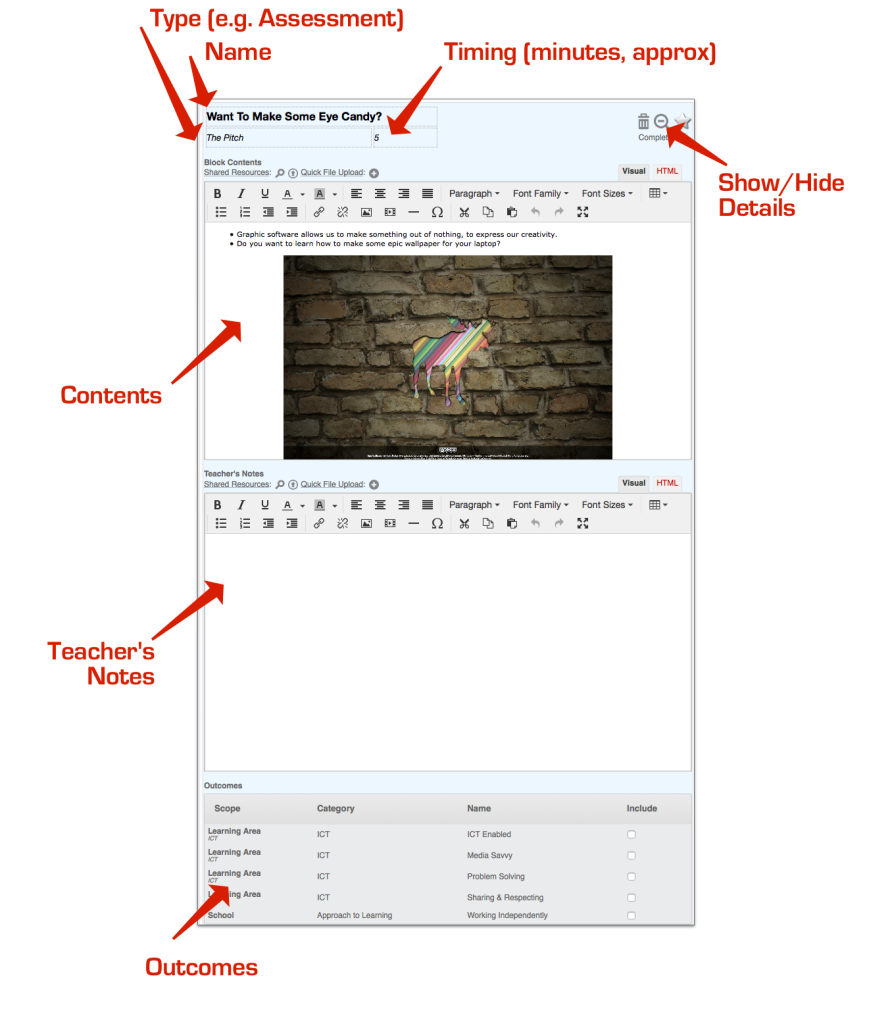Introduction
When it comes to planning, teachers have an almost infinite number of ways to do things. Gibbon tries to avoid tying you down to a particular approach, but instead seeks to give options. In starting planning you have an incremental range of approaches, each additional level of which represents an increase in upfront investment of time, but each of which saves time in the long run.
Decisions
Before commencing planning, whether it be as an individual, a department or a whole school, it is worth understanding the different approaches available to you.
- Just Lessons - when you click on the "Planner" icon anywhere in Gibbon's interface it takes you to the Lesson Planner, which is the quickest way to get started. In this approach you create lessons for each class (e.g. SC10.1 or Year 10 Science, Class 1). Each lesson is an independent entity, so there is little structure over a course.
- Simple Units - as well as the Lesson Planner, Gibbon includes a Unit Planner. The quickest way to get going, is to create a simple unit, and then, when creating lessons, specify that the lesson belongs to the units. Now you have some structure within your course.
- Smart Blocks - the problem with approach 2 is that all your content is stuck in your lessons, making it harder to reuse in different classes, courses and school years. The solution is to store your learning content in Smart Blocks, which exist within the unit. Blocks can be stacked, dragged and drop, and can have their contents shown or hidden. Once blocks are in a unit, they can be deployed to a class very quickly, allowing detailed lesson plans to be produced in a few minutes.

- Smart Blocks Pro - most users start by making blocks a single lesson (as this is easy to conceptualise). However, if you can make your smart blocks smaller (e.g. activities, assessments, teacher talk, etc), you have more control over your content. If, for example, you do not finish part of a lesson, you can just drag that content into the next lesson. In addition, if your blocks have times, when you come to deploy a unit, the system will try and place them into lessons automatically, saving time again. The video below gives an overview of how Smart Blocks work: